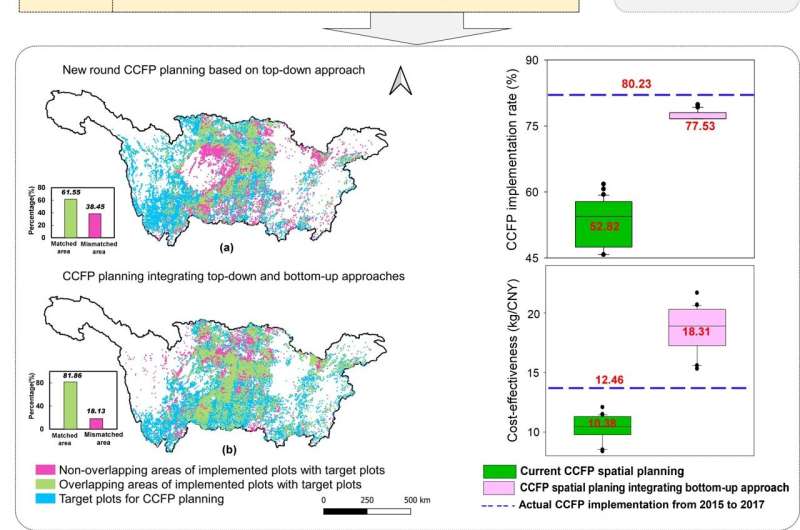Embedding social considerations in large-scale ecological restoration planning

The growth of ecological restoration programs worldwide has made the planet greener. Meanwhile, the failure of large-scale restoration has also been witnessed, due to conflicts between stakeholders during the implementation process.
For effective ecological restoration, a comprehensive understanding of social-ecological interactions during the land conversion process and the integration of social dimension into large-scale ecological restoration planning play key roles. However, large-scale ecological restoration planning tends to pay more attention to ecological attributes (e.g., slope), with social attributes often neglected. Furthermore, how social dimensions should be considered remains a challenge.
Recently, many researchers have attempted to analyze the responses and feedbacks of human behavior at the household scale during large-scale ecological restoration implementation. A new study led by the Research Center for Eco-Environmental Sciences of the Chinese Academy of Sciences provides an approach to integrating social considerations in large-scale ecological restoration planning, pointing out its importance for increasing the practicality and cost-effectiveness of projects.
To improve top-down policies based ecological restoration, this team developed a new approach that incorporates bottom-up approaches targeting stakeholder interests while addressing social considerations for behavior analysis.
Based on this integrated top-down and bottom-up approach, a meta-analysis was introduced to identify key socioeconomic and social-ecological factors influencing large-scale ecological restoration implementation, and a stochastic model was constructed to analyze the impact of socioeconomic drivers on the behaviors of decision-makers and participants at large scales.
This new approach was then tested on the Cropland Converted to Forest Program (CCFP) in the Yangtze River Basin. The evidence reveals the low efficiency of ecological restoration planning based on ecological process analysis alone.
"Top-down spatial planning, such as CCFP, which emphasizes hierarchical control within government structures, has been widely applied to large-scale ecological planning. However, these approaches usually overlook more comprehensive considerations of social-ecological interactions, resulting in implementation failure and low efficiency," said Zhaowei Ding, the lead author of the study.
"We find that current CCFP planning without socioeconomic considerations failed to achieve large-scale program goals and showed low investment efficiency, with 19.71% of the implemented area reconverting to cropland after contract expiry. We applied our method to CCFP planning in the Yangtze River Basin and found that spatial matching between planned and actual restoration increased from 61.55% to 81.86% when socioeconomic drivers were included. In addition, compared to that of current CCFP implementation, the cost effectiveness of spatial planning with social considerations improved by 46.94%."
This research demonstrates that spatial optimization planning that integrates both top-down and bottom-up approaches can lead to more practical and effective ecological restoration, compared to approaches that are only top-down. This integrated top-down and bottom-up prioritization method can provide scientific support for improving the practicality of spatial planning for effective ecological restoration management in China and beyond.
The research was published in Engineering.
More information: Zhaowei Ding et al, Integrating Top-Down and Bottom-Up Approaches Improves Practicality and Efficiency of Large-Scale Ecological Restoration Planning: Insights from a Social-Ecological System, Engineering (2022). DOI: 10.1016/j.eng.2022.08.008
Provided by Engineering



















